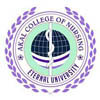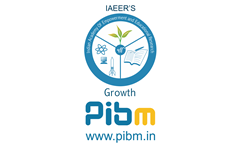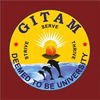
Top Trending Universities










Average Fees :
-
The Admission Committee has set the UCEED entrance exam syllabus for 2022. (IIT Bombay). Aspirants must carefully read the contents of the syllabus before beginning to study for the exam. Candidates who are familiar with the exam format and the IIT UCEED syllabus will do well in the UCEED exam.
There are two parts to the exam. There are two parts to this project: part A and part B. Part A of the UCEED curriculum 2022 consists of six topics and the test lasts two and a half hours, whilst Part B has only one drawing-related question. The course covers topics such as sketching proportionate products, situations, and objects with good line quality, perspective, composition, proportion, and shading. To learn more about the UCEED syllabus 2022, see the information provided below.
Part A of the exam is divided into three components and takes two and a half hours to complete in the online mode. It is divided into six primary topics, each of which is given below.
Visualization and Spatial Ability: Topics covered in the UCEED 2022 visualisation and spatial ability syllabus include pictorial and diagrammatic questions to assess understanding of transformation and/or manipulation of 2D shapes and 3D objects, as well as knowledge of practical and everyday mechanical and scientific concepts.
Observation and Design Sensitivity: The ability to recognise hidden features in everyday objects, people, circumstances, and events and to critically evaluate them. Analyzing, reasoning, classifying, inferring, and predicting are all examples of paying attention to specific details. Perception of small changes in visual qualities and aesthetic results.
Environmental and Social Awareness: A general understanding of environmental aspects such as climate, population, water, vegetation, pollution, weather, natural resources, and so on, as well as their effects on product design, image, infrastructure, and the environment. Social and cultural connections to design, the history of the designed artefact, and socially responsible and environmentally sustainable design answers are all important considerations. Art, sculpture, and literature history.
Reasoning Analytically and Logically: Ability to analyse data, whether qualitative or quantitative, and find patterns within it. Ability to evaluate ideas, arguments, or solutions in light of relevant criteria. Checking for hidden prejudice or preconceptions, as well as determining whether facts and argument support findings. Ability to discern from a short passage which of several statements is the most appropriate solution to a stated question using logic and organised thinking. Patterns, brainteasers, and data interpretation
Language and Creativity: Ability to understand and use Standard English is required for language and creativity. Reading comprehension and English grammar expertise are required. Ability to think creatively about alternatives, discern novel options, and think outside of the box.
Design Thinking and Problem-Solving: Ability to use visual analogies, metaphors, signs, and symbols in design thinking and problem-solving. Understanding of complexity, the ability to detect issues, produce alternatives, evaluate possibilities, and choose solutions.
Part B's syllabus consists of only one 60-point question that will be administered in an offline format over the course of 30 minutes. Part B of the exam consists of a drawing question that students must complete on an answer sheet provided in the exam room. Candidates are graded on their understanding of proportion, perspective, shading, and composition in this drawing question. ONE question from the following topic will be asked in Part B:
Drawing: The ability to draw proportionate products, people, or scenes using good line quality, composition, proportion, perspective, and shading.
Note: The topics listed above are not all-inclusive, but they do represent the nature of the inquiries. The UCEED 2022, on the other hand, might not cover everything.
